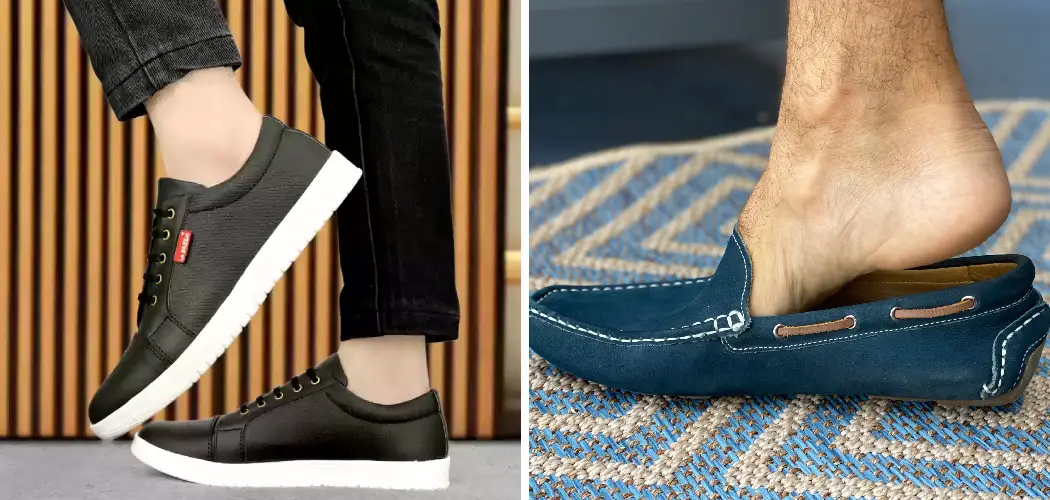Wearing shoes that don’t fit comfortably can be a real pain, especially when you have narrow feet. You may often find yourself having to constantly adjust your shoes or suffer from blisters and discomfort.
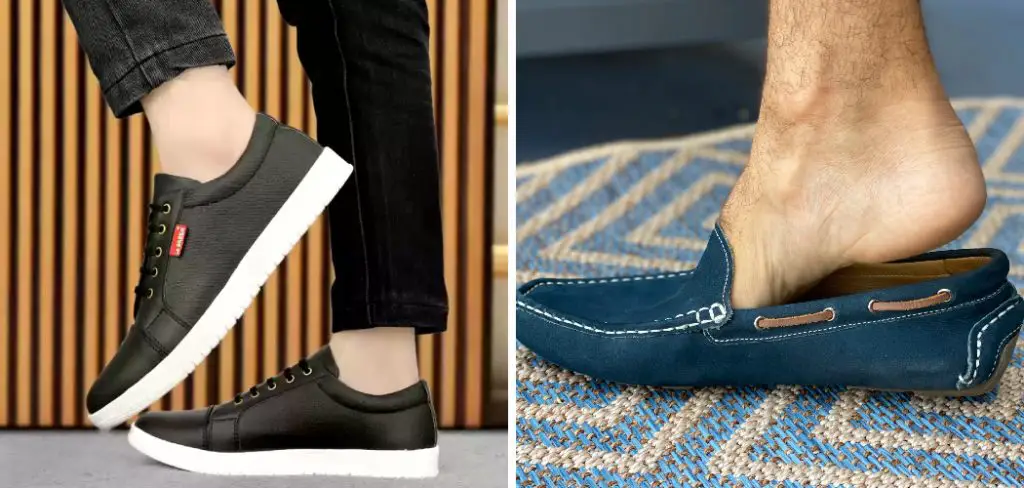
But fear not; there are ways to make wide shoes fit narrow feet without compromising on style or comfort. In this guide on how to make wide shoes fit narrow feet, we will discuss different techniques and tips for adjusting wide shoes to fit narrow feet.
Necessary Items
To make wide shoes fit narrow feet, you will need the following items:
- A pair of wide shoes
- Insoles or inserts (gel or foam)
- Shoe stretchers
- Thick socks
12 Steps on How to Make Wide Shoes Fit Narrow Feet
Step 1: Choose the Right Pair of Wide Shoes
The first step to ensuring a comfortable fit is to choose the right pair of wide shoes. Make sure to get the proper size as well. Shoes that are too small or too big can cause discomfort and blisters, regardless of your foot width.
Step 2: Add Insoles or Inserts
Insoles or inserts made from gel or foam can provide extra cushioning and support for your feet. They can also help fill in any empty space inside the shoe, making it fit more snugly on your narrow feet. As an added bonus, these inserts can also help with shock absorption and reduce foot fatigue.
Step 3: Wear Thick Socks
Wearing thick socks can add extra padding and create a tighter fit for your wide shoes. This is especially helpful if you have one foot that is significantly narrower than the other. Just be sure not to make your shoes too tight, as this can cause discomfort and restrict blood flow.
Step 4: Use Shoe Stretchers
Investing in a shoe stretcher can be a game changer for those with narrow feet. These devices are designed to widen the shoes by stretching them out gradually. Be sure to follow the instructions carefully and not overstretch the shoes, as this can cause damage.
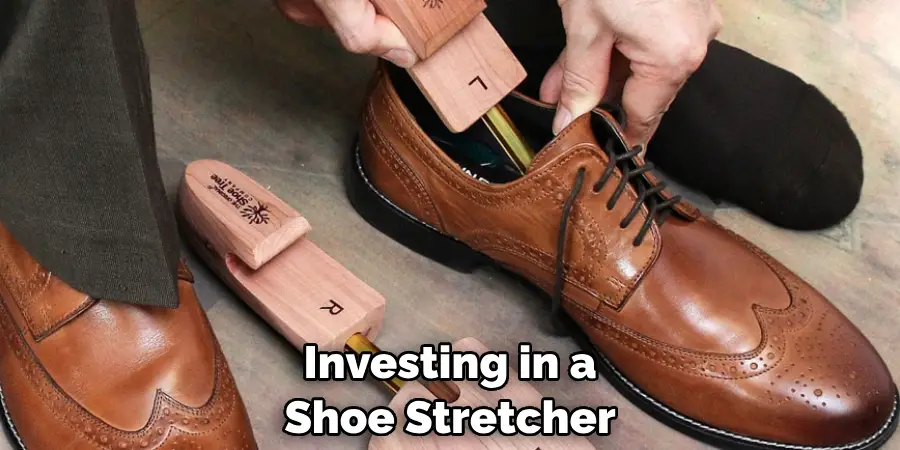
Step 5: Heat and Stretch the Shoes
If you don’t have a shoe stretcher, you can also try heat-stretching your shoes. Use a hairdryer to warm up the tight areas of your shoes, and then wear them with thick socks until they cool down and mold to the shape of your feet.
Step 6: Try Freezing Your Shoes
This may sound bizarre, but freezing your shoes can also help stretch them out. Fill a plastic bag with water and place it inside your shoes, then put them in the freezer overnight. As the water freezes and expands, it will stretch out the tight areas of your shoes.
Step 7: Use Sock Liners
Sock liners act as a barrier between your feet and the shoe, preventing them from slipping and sliding inside. They can also help fill in any empty space, making the fit more snug for narrow feet. Some sock liners also have extra cushioning for added comfort.
Step 8: Use Adhesive Strips
If your shoes have straps, buckles, or laces, you can use adhesive strips to keep them in place and prevent slipping. This will not only make the fit more secure but also help fill in any empty space inside the shoe.
Step 9: Try Shoe Fillers
Shoe fillers are small inserts that can be placed at the front or sides of your shoes to make them fit more snugly. They come in different shapes and sizes and can be easily removed if needed. Keep in mind that these may not work for all types of shoes.
Step 10: Get Shoes with Adjustable Features
If you have narrow feet, it’s always a good idea to look for shoes with adjustable features such as straps or laces. This will allow you to tighten the shoe as needed to get a better fit. While this may not work for all shoes, it’s worth considering when shopping.
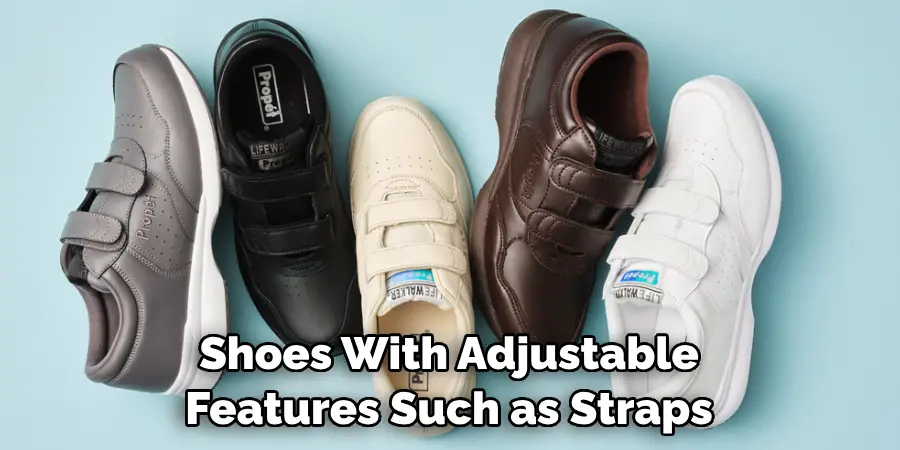
Step 11: Visit a Shoe Repair Shop
If you’ve tried everything and still can’t seem to get the perfect fit, consider visiting a shoe repair shop. They have professional tools and techniques that can stretch out your shoes without damaging them. It may be a bit more expensive, but it’s worth it for a comfortable fit.
Step 12: Know When to Let Go
Sometimes, no matter how hard you try, a pair of shoes just won’t work for your narrow feet. It’s important to know when to let go and find another pair that fits better. Don’t force yourself to wear uncomfortable shoes, as this can lead to foot problems in the long run.
Having narrow feet doesn’t mean you have to give up on stylish or wide shoes. With these 12 steps, you can make any pair of wide shoes fit comfortably and securely on your feet. Experiment with different methods and find what works best for you.
Keep in mind that these tips may also work for making narrow shoes fit wide feet. Don’t be afraid to try them out and enjoy comfortable, well-fitting shoes! So keep trying different methods until you find the perfect fit for your narrow feet.
9 Safety Measures for Stretching Shoes
When stretching shoes, it’s important to keep in mind some safety measures to avoid damaging them or hurting yourself. Here are nine safety tips to follow:
1) Take Breaks
Don’t try to stretch your shoes all at once. Give them time to adjust and take breaks between stretching sessions. If you feel any discomfort or pain, stop immediately. So if you’re trying the freezing or heat stretching method, make sure to give your shoes enough time to cool down before repeating the process.
2) Don’t Overstretch
Be careful not to overstretch your shoes, as this can cause permanent damage. Follow the instructions for shoe stretchers carefully and resist the urge to push them beyond their limits. Even with heat or freezing methods, don’t leave the shoes in for too long.
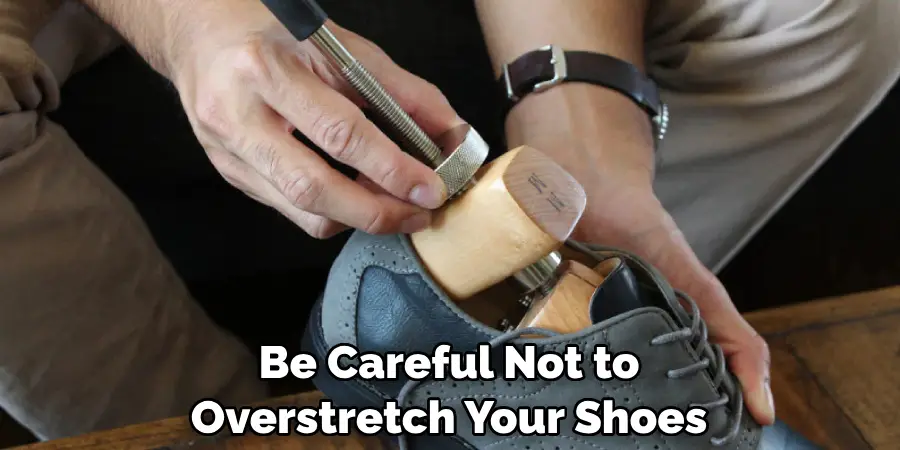
3) Use Gentle Techniques
When stretching your shoes, be gentle and patient. Don’t force them to stretch quickly, as this can cause damage. Instead, use gentle techniques and take your time to allow the material to adjust gradually.
4) Avoid Using Chemicals
Avoid using harsh chemicals or substances to stretch your shoes, as they can damage the material. Stick to natural methods such as heat or freezing, or invest in a shoe stretcher. However, if you’re using a shoe repair shop, make sure they use safe and appropriate techniques.
5) Test in Small Areas
Before stretching your entire shoe, test the method or device on a small area first. This will allow you to see how it affects the material and avoid any potential damage. If it works well, then proceed with the full stretch.
6) Use Protective Gloves
When using heat or freezing methods, it’s a good idea to wear protective gloves. This will prevent any burns or frostbite on your hands while handling hot or cold shoes. Then, once the shoes have cooled down or warmed up, you can use your hands to mold them.
7) Don’t Stretch Thin or Delicate Materials
Thin or delicate materials, such as satin or mesh, should not be stretched using heat or freezing methods. These materials are more prone to damage and may not be able to withstand the stress. Stick with a shoe stretcher or invest in a new pair of shoes for these materials.
8) Read Reviews
If you’re planning to use a shoe stretcher or visit a shoe repair shop, make sure to read reviews and do some research beforehand. This will help you find a reputable and safe option that won’t damage your shoes.
9) Know When to Stop
If a shoe is too tight and doesn’t seem to stretch, it’s important to know when to stop. Trying to force the shoe to stretch beyond its limits could result in permanent damage or injury. If this happens, it may be time to invest in a new pair of shoes that fit comfortably.
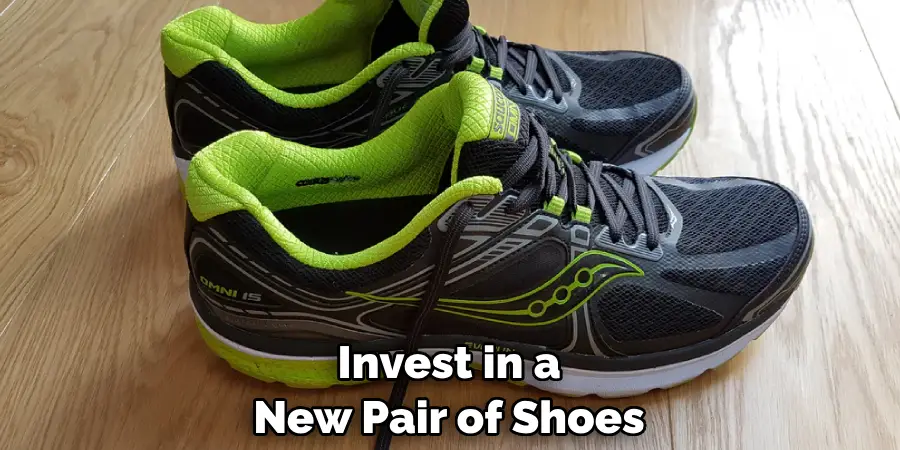
Overall, always prioritize safety when stretching your shoes, and don’t push them beyond their limits. With these tips, you can successfully stretch your shoes without any harm to yourself or your footwear. So follow these safety measures on how to make wide shoes fit narrow feet and enjoy a comfortable and well-fitting pair of shoes!
8 Things to Avoid When Stretching Shoes
While there are many techniques and methods for stretching shoes, it’s important to keep in mind some things you should avoid. Here are eight common mistakes to avoid when stretching your shoes:
1) Using Too Much Force
One of the biggest mistakes people make when stretching their shoes is using too much force. This can cause permanent damage to the material and lead to an uncomfortable fit. Instead, be patient and use gentle techniques.
2) Skipping the Test Patch
As mentioned earlier, it’s important to test any stretching methods on a small area of your shoe first before attempting to stretch the entire shoe. Skipping this step could result in unexpected damage or changes to the material.
3) Using Heat on Delicate Materials
Certain materials, such as satin or mesh, are not suitable for heat stretching. Using heat on these delicate materials can cause them to shrink or warp and ruin your shoes. Stick to gentler methods for these types of shoes.
4) Stretching Only One Area
If you’re trying to stretch a specific area of your shoe, such as the toe box, make sure to also stretch surrounding areas. This will ensure a more even and comfortable fit all around instead of just in one spot.
5) Ignoring Pain or Discomfort
If you feel any pain or discomfort while stretching your shoes, stop immediately. It’s not worth risking injury or damaging your shoes for the sake of a comfortable fit. Re-evaluate your technique or try a different method.
6) Forgetting to Condition the Material
After stretching your shoes, make sure to condition the material to prevent any potential damage. This is especially important for leather and suede shoes, which can become dry and cracked if not properly conditioned after stretching.
7) Rushing the Process
Stretching shoes takes time and patience. Rushing the process could result in damage to your shoes or an uneven fit. Make sure to follow instructions carefully and take breaks between stretching sessions.
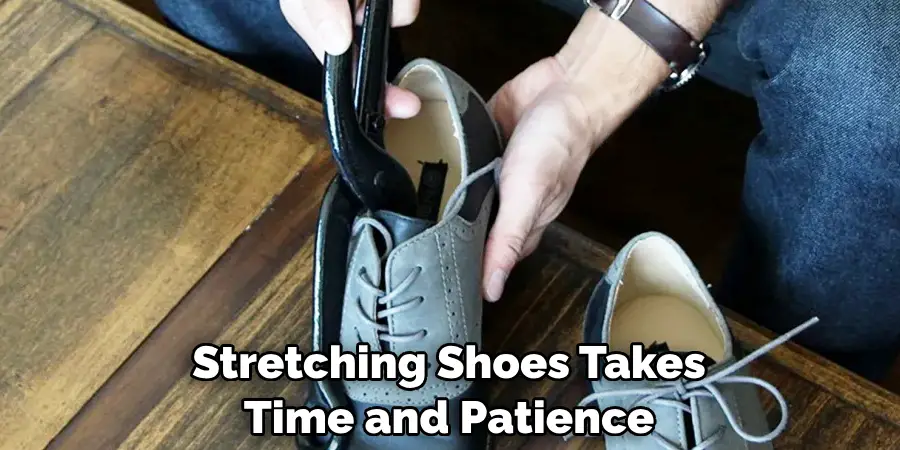
8) Stretching Already Damaged Shoes
If your shoes are already damaged or have weak spots, avoid using stretching methods on them. This could worsen the damage and even cause them to become unwearable. Instead, invest in a new pair of shoes or take them to a professional shoe repair shop for proper care.
By avoiding these common mistakes, you can effectively stretch your shoes without any negative consequences. Keep these tips in mind when stretching your shoes, and enjoy a comfortable and well-fitting pair of footwear that will last for years to come!
8 Additional Tips for Maintaining Comfortable Shoes
While stretching your shoes can provide temporary relief, it’s important to also maintain their comfort in the long run. Here are eight additional tips for keeping your shoes comfortable:
1) Invest in Quality Shoes
Investing in a good pair of shoes from the start can save you a lot of discomfort and hassle in the future. Look for well-made, durable shoes with good support and padding. Soles that are made of materials like rubber or memory foam can also provide extra comfort.
2) Rotate Your Shoes
Wearing the same pair of shoes every day can lead to discomfort and even foot problems. To prevent this, try rotating your shoes and giving them a break in between wears. This will allow them to breathe and maintain their shape.
3) Use Insoles or Inserts
Insoles or shoe inserts can provide additional support and cushioning to make your shoes more comfortable. They can also help alleviate foot pain caused by conditions like plantar fasciitis. While purchasing insoles, make sure to choose ones that are suitable for your specific needs.
4) Keep Your Shoes Clean
Regularly cleaning and maintaining your shoes can help keep them comfortable and prolong their lifespan. Dirt and debris can build up inside the shoe, causing discomfort and even odor. Make sure to clean both the inside and outside of your shoes regularly.
5) Stretch Them Before Wearing
Before wearing a new pair of shoes, try stretching them out with a shoe stretcher or gently wearing them around the house for short periods of time. This will help prevent discomfort and blisters when you wear them for longer periods.
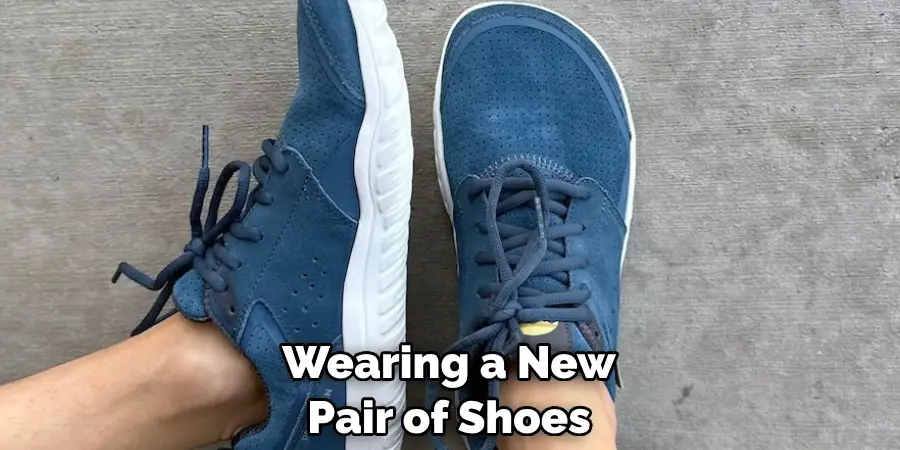
6) Replace Worn Out Shoes
Even with proper care, shoes eventually wear out. If you notice your shoes are becoming uncomfortable and no longer provide the support they used to, it’s time to replace them. This will prevent any potential foot problems and keep your feet happy.
7) Consider Your Arch Type
Different arch types may require different types of shoes for optimal comfort. If you have flat feet or high arches, make sure to choose shoes that provide proper support and cushioning for your specific needs.
8) Visit a Professional
If you’re experiencing chronic foot pain or discomfort, it’s best to visit a professional podiatrist or shoe specialist. They can assess your feet and recommend the best types of shoes for you, as well as any other treatments that may help alleviate foot problems.
By following these tips on how to make wide shoes fit narrow feet, you can maintain comfortable shoes for longer and avoid any unnecessary discomfort or foot issues. Remember to always prioritize your comfort and take proper care of your footwear for happy feet! So go ahead, stretch those shoes, and enjoy a comfortable fit without any mistakes. And don’t forget to keep up with maintenance and follow these additional tips for long-term comfort.
Frequently Asked Questions
Can I Use a Hairdryer to Stretch My Shoes?
It’s not recommended to use a hairdryer on your shoes, as the heat can cause damage to delicate materials. Stick to gentler stretching methods for better results.
How Long Should I Wear Stretched Shoes?
It’s best to wear stretched shoes for short periods of time at first, gradually increasing the amount of time as your feet adjust. If you experience any discomfort or pain, stop wearing the stretched shoes and re-evaluate your technique.
Can I Stretch Any Type of Shoe?
Not all materials are suitable for stretching. Avoid using stretching methods on shoes made of synthetic materials or those with delicate embellishments. Stick to natural materials like leather and suede for best results. Alternatively, consider taking your shoes to a professional for stretching if you’re unsure about the material.
How Often Should I Stretch My Shoes?
This depends on how frequently you wear your shoes and how much they stretch each time. If you wear them often and notice they become tight, consider stretching them every few months to maintain a comfortable fit. However, if your shoes tend to stretch quickly, avoid stretching them too frequently, which can damage the material.
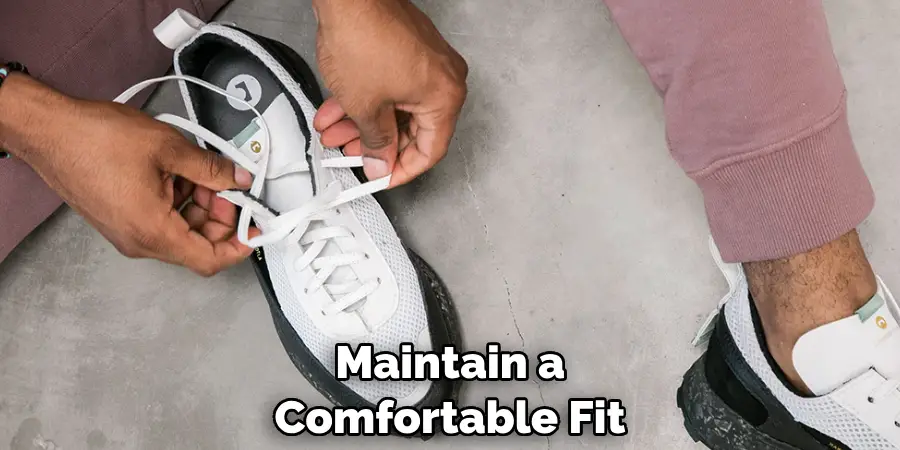
Can I Stretch Shoes That Are Too Small for Me?
Stretching shoes that are significantly too small for you is not recommended. This could cause damage to the shoe and may not result in a comfortable fit. It’s best to invest in a new pair of shoes that are the correct size for your feet.
Conclusion
Stretching your shoes can be an effective way to improve their comfort and fit, but it’s important to do so carefully and avoid common mistakes. Follow these tips onhow to make wide shoes fit narrow feet, take care of your shoes, and prioritize your comfort for happy and healthy feet.
And don’t forget to consult a professional if you experience chronic foot pain or discomfort. With the right techniques and maintenance, you can enjoy comfortable and well-fitting shoes for years to come.

